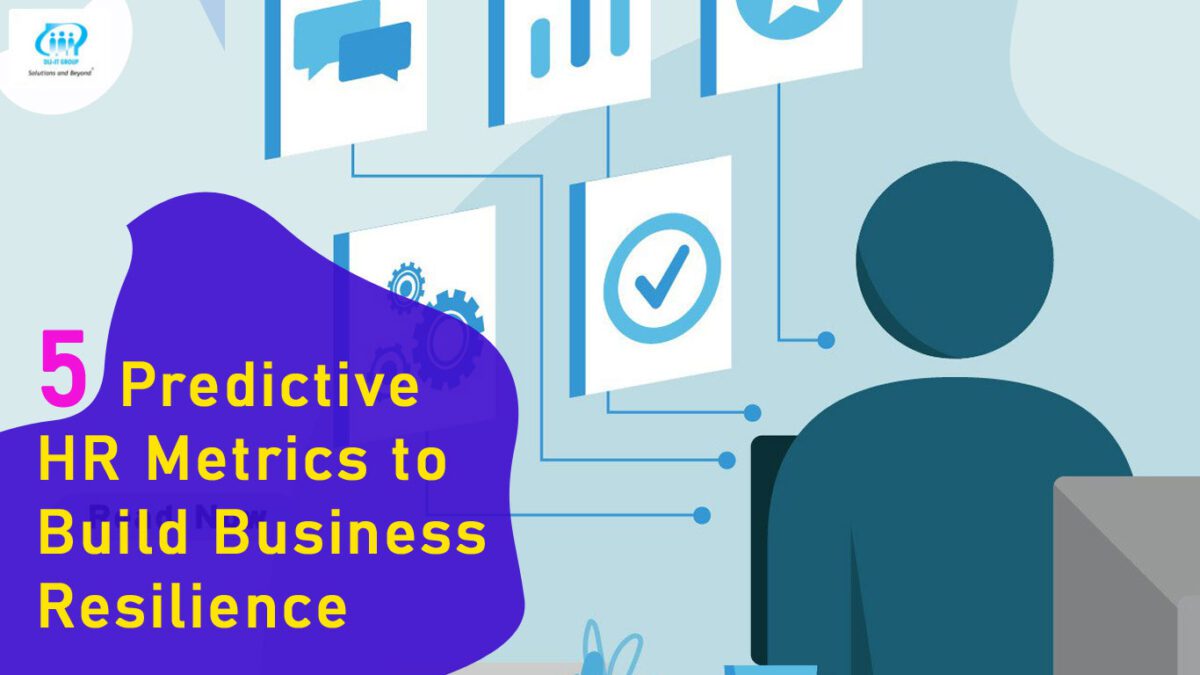Understanding the performance of your people function requires a thorough understanding of HR metrics. The phrase “HR metrics” refers to a broad range of computations that can be monitored and examined to measure trends related to HR’s responsibility. HR metrics might include measurements relevant to hiring, onboarding, performance management, general workforce trends, and the overall HRMS process.
Why Are HR Metrics Important?
HR metrics are data points that let you keep track of important human resource and hiring processes like employee performance, turnover, pay, engagement, cost-per-hire, and more. It enables businesses to monitor the performance of every one of their programs closely and make necessary adjustments.
HR metrics are a method of evaluating a certain component of your company. They can also assist you in dealing with unforeseen circumstances. The way we work can vary daily, and the past several years have shown us everything. In addition, some people now desire to work for businesses prioritising equality, diversity, and well-being.
You must study workforce and employee data to establish a culture where people feel appreciated. If you don’t, you risk losing your staff’s loyalty and trust as their values change and develop. You can begin your journey towards analytics with the aid of HR metrics. They are the starting point for making data-informed decisions that align with your company’s objectives.
What HR Metrics Are The Most Crucial?
Metrics come in a variety of forms, each with a specific purpose. These are 5 essential key metrics that every business should measure with HRMS:
Flight Risk
The chance of an employee leaving your company during this time is known as flight risk. Numerous leading factors, including their age, length of employment, department, and industry, will impact those projections.
Identifying flight risk at a departmental and organisational level is quite significant, particularly for specialised and difficult-to-fill positions. It may be possible to avoid spending thousands of dollars on new hires by taking targeted action to keep that personnel.
Obviously, some turnover is expected and, in fact, quite healthy. However, rather than seeking a new job, your most talented employees can simply be looking for a new opportunity or challenge.
Regrettable Loss
Similarly to flight risk, this metric examines which individuals would be a regrettable loss to the organisation if they left. Perhaps they routinely perform well, possess in-demand skill sets, or have the potential to be leaders. These people are priceless and worth every penny.
When calculating regrettable loss, trends found through analysis of turnover and flight risk are combined with performance management & succession planning data. This information can guide retention strategy, enabling HR to adopt a more focused and economic plan.
HR should encourage managers to start career dialogues with their team members and explore their next actions, for instance, if an employee is marked as a regrettable loss. Such proactive behaviour shows a sincere dedication to one’s profession and long-term prospects.
Compensation
One of the primary motives for leaving a job is pay. Money isn’t the only factor to consider. It could also imply that there are no prospects for progress or that individuals are treated disrespectfully. Compensation includes salary, paid time off, bonuses, health insurance, and retirement programs. Your pay scale will align with market demand if you monitor this metric.
- Salary
- Compa-ratio
- minimum, middle, and maximum ranges
- penetration of a range
- Band or grade
Hiring Success
A fascinating additional predictive metric to consider is hiring success. This HR and payroll software program detects trends among high-performing individuals to uncover specific attributes that have led to their success.
The objective is to use this knowledge during the recruiting process to seek those qualities in candidates that will enhance the proportion of high achievers entering the organisation.
Of course, there are various reasons why some people perform better in their jobs than others; occasionally, it has more to do with the company or department than the individual. However, interesting trends and patterns may appear if there is enough data.
Workforce Planning
Workforce planning determines the number and type of employees your company will require at a given time. Using these metrics, you may see where the current workforce falls short of your future requirements. Without these metrics, you risk not having the right personnel to help you reach your objectives. Typical metrics to understand include:
- Absenteeism
- rates of turnover and attrition
- a new hire’s time to proficiency
- levels of tenure, seniority, and experience
- Coverage of skills
A predictive metrics system typically has user-friendly functionalities that may be customised. Predictive metrics allow HR professionals to make decisions based on actual facts rather than guessing the organisation’s overall perception with HR and payroll software. It will result in more effective business outcomes.
